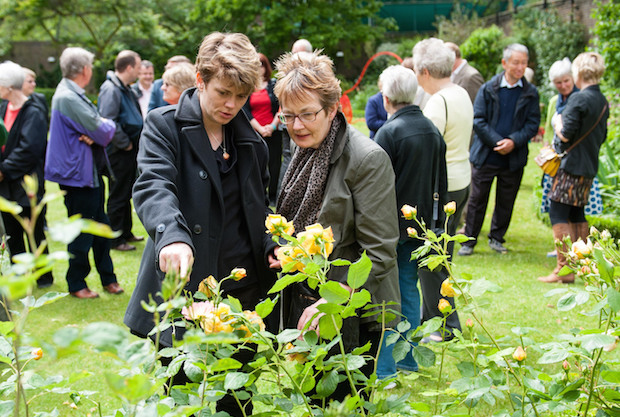One of Britain’s great traditions is the open garden afternoon: an opportunity for folk revelling in being both middle-aged and nosy (like me) to wander around other people’s plots and peer at what they’ve planted while scoffing large slices of cake.
The National Gardens Scheme and Open Squares are two of the most popular, and while they do allow people to see the true beauty of someone else’s well-maintained dahlia bed or snowdrop collection, they also help us indulge in that also very British tradition of pointing at the strange things people put in their back yards. Often these strange things aren’t weird planting combinations, but sculptures that have special emotional meaning to the owners but which are a bit eccentric, such as alarmingly large statues of the owner with a deceased pet, Bible verses inscribed around a walled garden, or slightly raunchy sculptures hidden in the shrubbery.
The Downing Street Garden opens to the public via a special ballot system each year, and having wandered round peering at the gorgeous roses and delphiniums, it’s well worth a visit for anyone who loves plants. After next Thursday, though, it may be worth a visit for anyone who likes pointing and laughing at eccentric garden sculptures. Ed Miliband has announced that one of his most important acts as Prime Minister will be a spot of garden design, installing this large limestone plinth of his pledges in the rose garden.

‘Pledges’ is rather generous: they’re actually platitudes rather along the lines of ‘people being nice to each other’ or ‘take your litter home with you’. Miliband is promising ‘a strong economic foundation’, ‘higher living standards for working families’, ‘an NHS with the time to care’, ‘controls on immigration’ (clearly it needed something bigger than a mug), ‘a country where the next generation can do better than the last’ and ‘homes to buy and action on rents’.
That huge 8ft 6in plinth will sit in the Number 10 garden like an enormous post-it note reminding Miliband to get on with building ‘a strong economic foundation’. His point is that he will keep his promises, unlike those who have come before him. Generally, though, the way to keep your promises if you end up being Prime Minister is to pass laws to ensure that the stuff you want to happen can happen, but perhaps this big old stone is the new politics.
If you’re a voter, will you really think ‘oh yes, the guy carved what he wants to do into a stone, therefore I’ll trust him’? Or will you think that he’s making an ill-judged attempt to set up shop at the Chelsea Flower Show if he doesn’t manage to be Prime Minister? If you’re a Labour MP fighting in a marginal seat or in a Scottish constituency where your majority is melting like snow, will you really be thinking ‘yes, that’s a better use of money than a billboard poster responding to the endless Tory depictions of Alex Salmond’?
What is the point of what is essentially a massive headstone? It has its own hashtag, the #EdStone. Perhaps that would be a good thing if the stone itself got people talking about Labour’s policies. But are these platitudes really the best thing the party can come up with four days out from polling day? Labour is campaigning in this election with a heavy bag of policies, yet this looks like the kind of waffle you see above the till in a supermarket, inscribed on someone’s grave.
The big question is not ‘how will Ed implement these interesting and appealing policies?’ but what on earth is he going to do with the darned thing if he doesn’t end up Prime Minister. It’s a bit more difficult to store than a ‘controls on immigration mug’.
For years Labour has complained that it won’t win the air war in this election because it doesn’t have enough money. But today suggests that there might be another reason: that given half the chance the party would produce something like this.







Comments